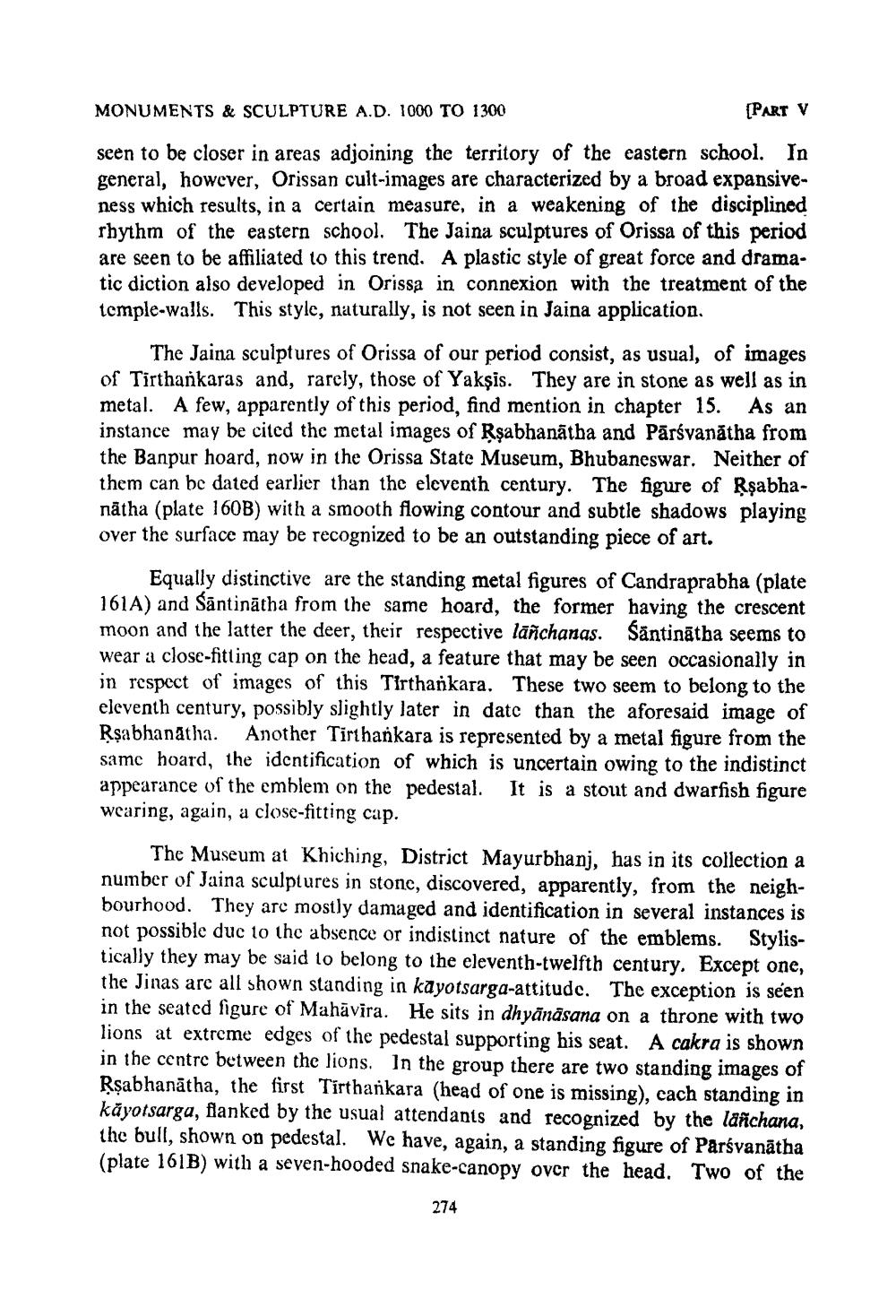________________
MONUMENTS & SCULPTURE A.D. 1000 TO 1300
[PART V
seen to be closer in areas adjoining the territory of the eastern school. In general, however, Orissan cult-images are characterized by a broad expansiveness which results, in a certain measure, in a weakening of the disciplined rhythm of the eastern school. The Jaina sculptures of Orissa of this period are seen to be affiliated to this trend. A plastic style of great force and dramatic diction also developed in Orissa in connexion with the treatment of the temple-walls. This style, naturally, is not seen in Jaina application,
The Jaina sculptures of Orissa of our period consist, as usual, of images of Tirthankaras and, rarely, those of Yakşis. They are in stone as well as in metal. A few, apparently of this period, find mention in chapter 15. As an instance may be cited the metal images of Rşabhanātha and Pārsvanātha from the Banpur hoard, now in the Orissa State Museum, Bhubaneswar. Neither of them can be dated earlier than the eleventh century. The figure of Rşabhanātha (plate 160B) with a smooth flowing contour and subtle shadows playing over the surface may be recognized to be an outstanding piece of art.
Equally distinctive are the standing metal figures of Candraprabha (plate 161A) and Santinātha from the same hoard, the former having the crescent moon and the latter the deer, their respective lāñchanas. Säntinātha seems to wear a close-fitting cap on the head, a feature that may be seen occasionally in in respect of images of this Tirthankara. These two seem to belong to the eleventh century, possibly slightly later in date than the aforesaid image of Rsabhanatha. Another Tirthankara is represented by a metal figure from the same hoard, the identification of which is uncertain owing to the indistinct appearance of the emblem on the pedestal. It is a stout and dwarfish figure wearing, again, a close-fitting cap.
The Museum at Khiching, District Mayurbhanj. has in its collection a number of Jaina sculptures in stone, discovered, apparently, from the neighbourhood. They are mostly damaged and identification in several instances is not possible duc to the absence or indistinct nature of the emblems. Stylistically they may be said to belong to the eleventh-twelfth century. Except one, the Jinas are all shown standing in kayotsarga-attitude. The exception is seen in the seated figure of Mahāvīra. He sits in dhyānāsana on a throne with two lions at extreme edges of the pedestal supporting his seat. A cakra is shown in the centre between the lions. In the group there are two standing images of Rsabhanātha, the first Tirtharkara (head of one is missing), cach standing in kāyotsarga, flanked by the usual attendants and recognized by the lanchana, the bull, shown on pedestal. We have, again, a standing figure of Parsvanātha (plate 161B) with a seven-hooded snake-canopy over the head. Two of the
274




